I’m lucky enough to own a couple dozen early 1930s (possibly even late 1920s in some cases) patterns, most by Excella. I thought I would put my pattern collection up for other people to use as reference and inspiration. This is 1/3 of the 30s collection. The others will be coming soon.
I was given these patterns in the condition they are in now – with the vintage envelopes adhered to new Manila envelopes. It’s lovely and practical, but without the guilt of having altered the original pattern envelopes myself!
Someday I’ll get around to putting these up on the Vintage Pattern Wiki (no, please don’t do it for me!)
I’ve never figured out how I feel about the circular skirt join on this one:
This is the pattern responsible for the Frumpy Dress, and the Summertime Southerly dress. It is also where I think the patterns transition from 1920s to 1930s.
And this is the pattern responsible for the Red Lips Kiss My Blue Away frock, which started out without the hip flounces as the Little Bit of Red dress, but got remade with them and now shows E3137 in all its crazy early 1930s glory.
The next pattern may be too much crazy early 1930s glory even for me – but you never know!
I think this one is so chic:
I’ve helped a friend make this up, and her version looks gorgeous:

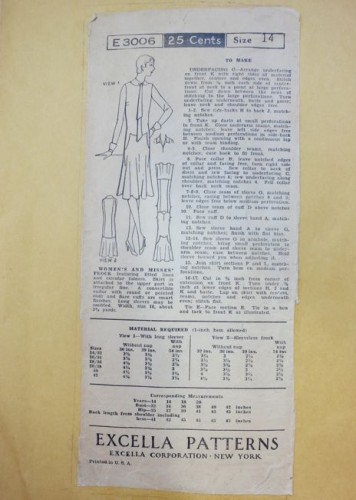

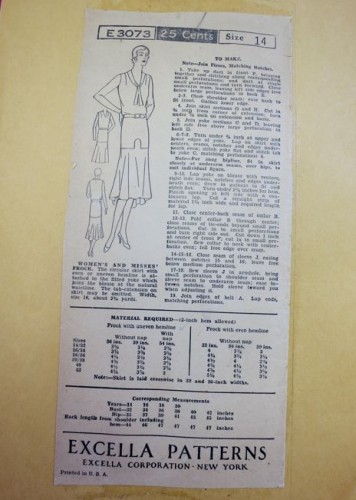
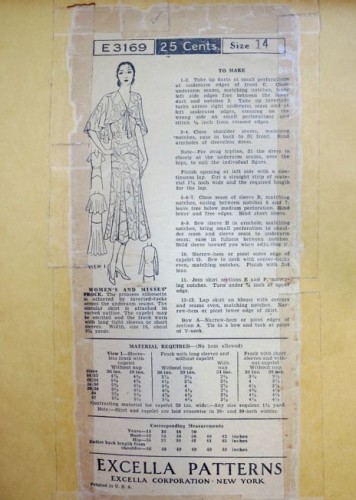
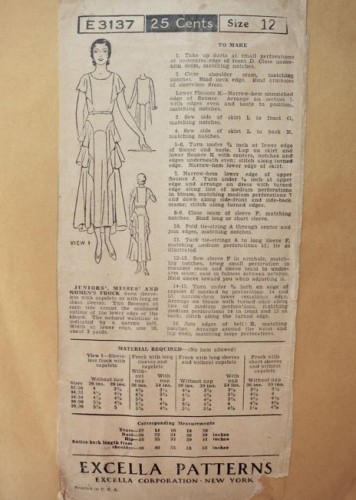


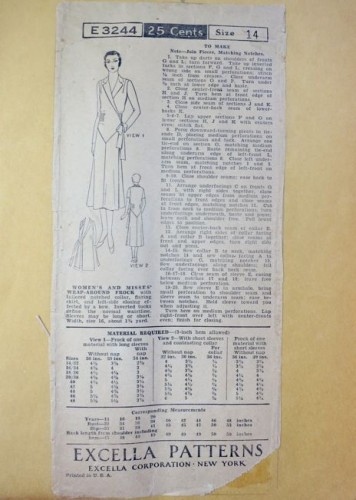
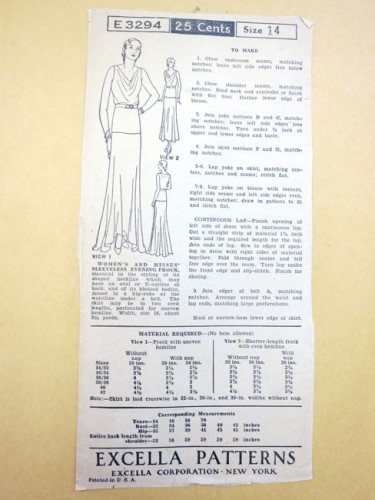
Those are some really lovely patterns! And the dresses you’ve made using them are equally lovely – thanks for sharing!
Oooo! I love E3178. You’re right, it’s very chic. I’d love to see an image of the last pattern made up.
-Emily
I’ll see if my friend is willing to let me share images. 🙂
What elegant patterns. I wish there were some nice 30’s reproduction prints available form the big pattern companies.
Ooo thanks for posting those! My cousin is getting married next year in Napier, and the wedding theme is Art Deco. I’ve been collecting ideas for dresses for the ladies in my family, those are great.
I love that a few of these actually have a waistband. I am an hourglass and look awesome in 50s styled things…. and in dropped waistbands it’s like I’m wearing a sack. Looks like I can still draft a sneaky waist definition and have it still Art Deco after all.
I have a dressmaking book from 1931 that explicitly states that you can put a waistband on anything you want. So there you go.
Wow, I just love these dresses–and the slouchy poses from the drawn models!
Yay! Thanks Elise! Now, to just grow another 20cms to become as long and limber as the models …
Right. But you know, Marguerite Dumont always looked so beautiful in Art Deco, no matter what Groucho thought!
E3178 would make a fantastic work skirt.
Funny that you mention that! I actually made a work skirt out of a nearly identical pattern (in the next set I’ll be showing you). Sadly, it has since gone to well-worn skirt heaven, but it was a great skirt while it lasted.
First let me say I love the patterns and I just wanted to know if you knew any of the history of Excella, expecially why some of the instructions are on sheets in the 1920’s and some early 1930’s are on the back. I have a large collection and really need to collect some history.
So nice, how cool would it be if we dressed more like this now? I am curious if you can give a quick explanation about what stylistically defines a 30’s dress? For instance what differs between an art deco style and flapper style? And what category would these patterns come under (other than 30’s)?
Hi Rach,
I wouldn’t really put these patterns under any other category than 1930s. They were designed/printed in the 1930s, that is without question. Some are town frocks, some are garden-party frocks, some are evening wear.
’30s fashion was characterised by long, lean lines with little bust/waist/hip definition. Garments feature a lot of interesting cutting and inset details, and were either quite sleek and tailored, or very feminine with ruffles. The fabrics often had small floral or geometric prints.
Art Deco and flapper (especially flapper) are hugely misunderstood and mis-used terms, better to avoid them, and avoid confusion.
Art Deco wasn’t even used as a term until the 1960s, and refers to a group of styles practiced in the 1920s-30s-40s, all loosely characterised by a streamlined look and a reference to modern industry. There are textiles that were designed by ‘Art Deco’ artists, but few actual ‘Art Deco’ fashions – and you certainly wouldn’t find them on vintage patterns, which were meant for the middle classes.
Flapper is a vastly over-used term, and we’ve just had a little complain about it here on the blog. I don’t want to try to explain what a flapper really is in a comment, as I might just cause more confusion.
Does that help a little?
Yes this helps thank you. Especially good to read about over-used terms.